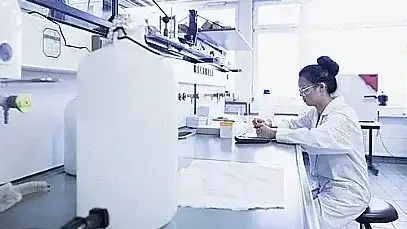The Connection Between Heavy Metals and Fatty Liver

The Toxic Link Between Heavy Metals and Liver Health
Heavy metals such as cadmium, lead, mercury, and arsenic are environmental toxins that pose significant risks to liver function. Recent research underscores their role in exacerbating non-alcoholic fatty liver disease (NAFLD), a prevalent condition characterized by excessive fat accumulation in liver cells. Understanding the connection between heavy metals and fatty liver is essential for early detection and preventive strategies, particularly in vulnerable populations.
Mechanisms Linking Heavy Metals to Fatty Liver
The Role of Oxidative Stress and Inflammation
Heavy metals disrupt liver function primarily through oxidative stress and inflammation. These processes are critical in the pathogenesis of NAFLD:
- Oxidative Stress: Heavy metals promote the formation of reactive oxygen species (ROS), which overwhelm the liver’s antioxidant defenses. This oxidative imbalance damages hepatocytes, leading to lipid peroxidation and cellular injury.
- Inflammation: Persistent exposure to heavy metals activates inflammatory pathways. This includes the upregulation of cytokines such as tumor necrosis factor-alpha (TNF-α) and interleukin-6 (IL-6), contributing to the progression from simple steatosis to non-alcoholic steatohepatitis (NASH).
Impaired Mitochondrial Function
Mitochondria play a pivotal role in lipid metabolism. Heavy metals impair mitochondrial function by altering the electron transport chain, leading to reduced energy production and increased ROS generation. This dysfunction exacerbates lipid accumulation and promotes hepatic fibrosis.
Epigenetic Modifications
Emerging evidence highlights the epigenetic effects of heavy metals. These toxins modify DNA methylation patterns and histone acetylation, altering gene expression related to lipid metabolism and inflammation. Such changes may predispose individuals to NAFLD and other liver disorders.
Heavy Metals Commonly Associated with Fatty Liver
Cadmium
Cadmium exposure, primarily through cigarette smoke and contaminated food, is strongly associated with hepatic lipid accumulation. Studies have shown that cadmium induces oxidative stress and disrupts lipid metabolism, contributing to NAFLD.
Lead
Lead, found in industrial emissions and older plumbing systems, impairs the liver’s detoxification pathways. Chronic lead exposure alters hepatic enzyme activity, promoting steatosis and inflammation.
Mercury
Mercury exposure, often from seafood and dental amalgams, affects mitochondrial function and promotes oxidative damage. Mercury’s impact on lipid peroxidation is a significant contributor to liver dysfunction.
Arsenic
Arsenic, present in contaminated drinking water and pesticides, is a potent hepatotoxin. Chronic exposure leads to mitochondrial damage, inflammation, and fibrosis, increasing the risk of advanced liver disease.
Common Heavy Metals and Their Effects on Liver Health
Cadmium
- Hepatic lipid accumulation
- Induces oxidative stress
- Disrupts lipid metabolism
Lead
- Impairs detoxification pathways
- Promotes steatosis
- Alters hepatic enzyme activity
Mercury
- Affects mitochondrial function
- Promotes oxidative damage
- Contributes to lipid peroxidation
Arsenic
- Potent hepatotoxin
- Causes mitochondrial damage
- Leads to inflammation and fibrosis
Clinical Manifestations of Heavy Metal-Induced Liver Dysfunction
Early Symptoms
The connection between heavy metals and fatty liver may present subtly in its early stages. Common symptoms include:
- Fatigue: Reduced energy production from mitochondrial dysfunction can cause systemic fatigue.
- Digestive Issues: Nausea, abdominal discomfort, and loss of appetite are often reported.
- Elevated Liver Enzymes: Blood tests may reveal increased levels of alanine aminotransferase (ALT) and aspartate aminotransferase (AST).
Advanced Conditions
Prolonged exposure can progress to more severe forms of liver dysfunction:
- Non-Alcoholic Steatohepatitis (NASH): Marked by inflammation and hepatocyte ballooning, NASH is a precursor to cirrhosis.
- Fibrosis and Cirrhosis: Persistent inflammation and oxidative stress lead to scar tissue formation, impairing liver function.
- Hepatocellular Carcinoma (HCC): Chronic exposure increases the risk of liver cancer, especially in individuals with underlying NAFLD.
Populations at Increased Risk
Occupational Exposures
Workers in industries such as mining, manufacturing, and agriculture face heightened risks due to prolonged exposure to heavy metals.
Geographic and Socioeconomic Factors
Residents in areas with high industrial pollution or arsenic-contaminated groundwater are particularly vulnerable. Lower socioeconomic status often correlates with increased exposure and reduced access to medical care.
Vulnerable Groups
- Children: Their developing organs are more susceptible to heavy metal toxicity.
- Pregnant Women: Heavy metals can cross the placental barrier, affecting fetal development.
- Individuals with Pre-existing Liver Conditions: Those with existing liver diseases are at increased risk of exacerbated damage.
Environmental Exposure
Communities living near industrial sites or areas with contaminated water supplies are at greater risk of heavy metal exposure. Learn more about global efforts to combat toxic metals through the World Health Organization's resources.
Diagnosis and Detection
Biomarkers of Exposure
Identifying the connection between heavy metals and fatty liver requires accurate biomarkers:
- Urinary and Blood Heavy Metal Levels: Measurements of cadmium, lead, mercury, and arsenic levels can confirm exposure.
- Oxidative Stress Markers: Elevated malondialdehyde (MDA) and decreased glutathione (GSH) levels indicate oxidative stress.
- Liver Enzymes: Persistent elevation of ALT and AST suggests liver injury.
Imaging Studies
Advanced imaging techniques such as elastography and magnetic resonance imaging (MRI) can assess liver fat content and fibrosis severity.
Biopsy
In cases of diagnostic uncertainty, a liver biopsy may be performed to evaluate histological changes associated with heavy metal toxicity.
Preventive Strategies and Treatment
Reducing Exposure
- Dietary Interventions: Consuming organic produce and reducing intake of high-risk seafood can minimize exposure to heavy metals.
- Water Filtration: Using certified filtration systems reduces arsenic and lead in drinking water.
- Workplace Safety: Implementing protective equipment and adhering to occupational safety standards lowers exposure risks for workers.
Supporting Liver Health
- Antioxidant Supplementation: Nutrients such as vitamin E, selenium, and N-acetylcysteine (NAC) mitigate oxidative stress.
- Dietary Fiber: High-fiber diets promote the excretion of heavy metals and support gut health.
- Regular Monitoring: Periodic liver function tests and imaging studies help detect early signs of damage.
Medical Interventions
Chelation therapy is a medical treatment that binds heavy metals, facilitating their excretion. While effective in severe cases, it must be administered under strict medical supervision due to potential side effects.
Emerging Research and Insights
Gut-Liver Axis
Recent studies reveal that heavy metals disrupt the gut microbiome, exacerbating liver inflammation. Restoring gut health may represent a novel therapeutic avenue.
Genetic Susceptibility
Research into genetic polymorphisms associated with heavy metal metabolism provides insights into individual susceptibility to liver damage.
Advanced Biomarkers
Development of non-invasive biomarkers, such as circulating microRNAs and proteomic profiles, holds promise for early detection and personalized treatment.
Regulatory and Public Health Implications
Strengthening Guidelines
Governmental agencies must update permissible exposure limits for heavy metals based on current research. For instance, lowering acceptable arsenic levels in drinking water could significantly reduce liver-related health risks.
Public Awareness Campaigns
Educating communities about the risks of heavy metal exposure and strategies for prevention is essential. Collaboration between healthcare providers, policymakers, and environmental organizations is key to mitigating the impact on liver health.
Conclusion
The connection between heavy metals and fatty liver underscores the need for vigilance in both clinical practice and public health policy. By understanding the mechanisms of toxicity, identifying at-risk populations, and implementing preventive strategies, we can reduce the burden of heavy metal-induced liver dysfunction. Ongoing research and multidisciplinary collaboration are critical to protecting liver health and improving patient outcomes.
Share this article

Dr. Alinda Mae Gordola, MD
I am a board-certified internist and gastroenterologist specializing in the diagnosis and treatment of digestive system disorders. See Full Bio.
-
1. Méndez-Sánchez N, et al. Global multi-stakeholder endorsement of the MAFLD definition. Lancet Gastroenterol Hepatol, 2022.
-
2. Tilg H, Moschen AR. Mechanisms behind the link between environmental pollutants and NAFLD. Nature Reviews Gastroenterology & Hepatology, 2021.
-
3. Ibrahim SH, et al. Environmental toxin exposure and liver disease. Hepatology, 2020.
-
4. Chen X, Zhang Y, Wang H. Modern approaches to assessing pesticide-related liver injury. Hepatology International, 2023.
-
5. Jaeschke H, et al. Mechanisms of hepatotoxicity induced by chemical pollutants. Toxicology and Applied Pharmacology, 2020.
-
6. Zelber-Sagi S, et al. Nutritional strategies for environmental toxin mitigation in liver health. Journal of Hepatology, 2021.
The Impact of Pesticides on Liver Function The impact of pesticides on liver function has garnered increasing attention in medical and scientific...
Fatty Liver IQ Quiz Understanding fatty liver disease is essential for maintaining liver health. This interactive Fatty Liver IQ Quiz helps you test your knowledge about key...
Benefits of Acupuncture for Fatty Liver Health Sitting in my clinic, I once had a patient named John, who walked in looking more like a deflated...

You might enjoy more articles by
Dr. Alinda Mae Gordola, MD
 Disease
Disease Diets
Diets Recipes
Recipes Supplements
Supplements Management
Management Calculators
Calculators Quizzes
Quizzes Glossary
Glossary




